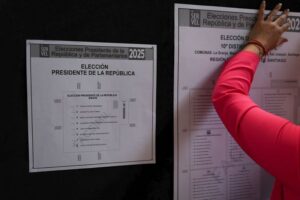CONAKRY, Aug. 13 (Xinhua) — On the Konkoure River flowing down from the Fouta Djallon highlands in central Guinea, the striking structure of the Kaleta Hydropower Station is reflected in the waters.
The facility has supplied stable electricity to the national capital of Conakry and villages in the northern mountains, now featured on Guinea’s 20,000-franc banknote, which shows a stark contrast to the scene a decade ago.
The hum of diesel generators used to cloud Conakry’s nights, despite the region’s fame as the “Water Tower” of West Africa.
Over 70 percent of Guinea’s power came from expensive and polluting fuel oil, with high costs and a fragile grid severely hindering economic development.
“Before Kaleta Hydropower Station was built, power outages were common in our community. We experienced them almost daily, sometimes lasting for hours,” recalled Alhassane Bangoura, a local translator who worked on the project.
In August 2015, the Kaleta Hydropower Station, constructed by China International Water and Electric Corporation (CWE), a wholly-owned subsidiary of China Communications Construction Company Limited, commenced full operations.
Its average annual output of 1.125 billion kilowatt-hours of clean electricity filled nearly half of the national power gap and increased the share of renewables in Guinea’s energy mix.
“The transmission network built alongside the station delivers power from the capital to 11 prefectures. Remote areas accessed stable electricity for the first time,” said Djenabou Diallo, financial manager of the Kaleta Power Plant Management Company.
In 2021, the Souapiti Hydropower Station, also constructed by CWE further upstream on the Konkoure River, began operations.
With a combined capacity of 690 megawatts, the Kaleta and Souapiti plants now contribute over 80 percent of Guinea’s electricity generation, liberating the country from its reliance on fuel oil.
This reliable green energy has also transformed Guinea from a power-deficient state into a net exporter, supplying electricity to six neighboring countries, including Senegal, Gambia, Guinea-Bissau, and Sierra Leone.
“We used to struggle to meet domestic demand. Now, we light up nights in neighboring countries,” Diallo told Xinhua with pride.
In Kaleta’s control room, Bangoura skillfully assisted a local crew. As a member of the station’s operations team, his journey also exemplifies the strength of China-Guinea technical cooperation.
“From construction to operation, we received systematic training in welding, electrical work, and equipment maintenance. The ‘knowledge transfer’ from Chinese engineers gave us valuable skills,” he said.
At its peak, the Kaleta project created over 1,500 local jobs. Since the operational phase in 2016, the CWE partnered with the Guinean government to select nearly 100 Guinean trainees for study in China or at local universities.
“Give a man a fish, and you feed him for a day; teach a man to fish, and you feed him for a lifetime,” said Chen Qiuhan, market development director at CWE Guinea.
The training and mentorship program at Kaleta was successfully replicated at Souapiti. Many of the local technicians trained at Kaleta have become mentors for the new project.
Today, the Guinean teams can independently handle routine maintenance and participate in scheduling and planning for both stations. “Our Chinese friends taught us not just technology, but the philosophy of sustainable development,” Bangoura noted.
The team at the Kaleta project donated equipment benefiting around 20,000 nearby residents, while regular “open days” often drew hundreds of local children to the venue.
“Chinese builders played football with us, celebrated our festivals, and respected our culture like friends. Once, when my family member fell ill, a Chinese colleague helped contact the Chinese medical team and drove us to the hospital,” Bangoura recounted.
As night falls, Kaleta’s lights twinkle like stars across the valley. In local homes, children study under lamps, factories hum with machinery, and cities in neighboring countries thrive on Guinean electricity.
“CWE is committed to further cooperation with the Guinean government. By steadily developing the power sector, we aim to better support Guinea’s mining development vision,” said Chen.
The 20,000-Guinean franc banknote bearing the station’s image not only embodies the West African country’s progress, but also sends a message that travels across mountains and seas: True cooperation ensures the light of advancement reaches every corner.





